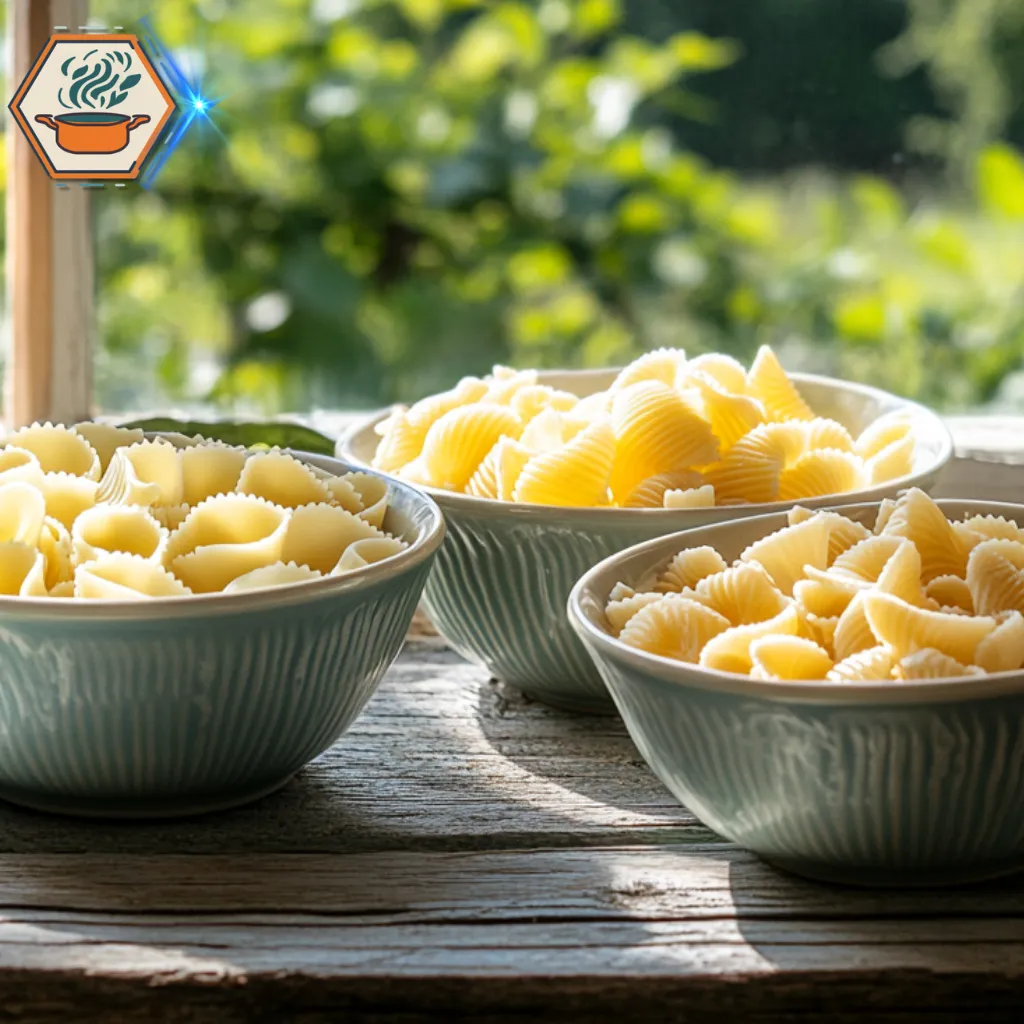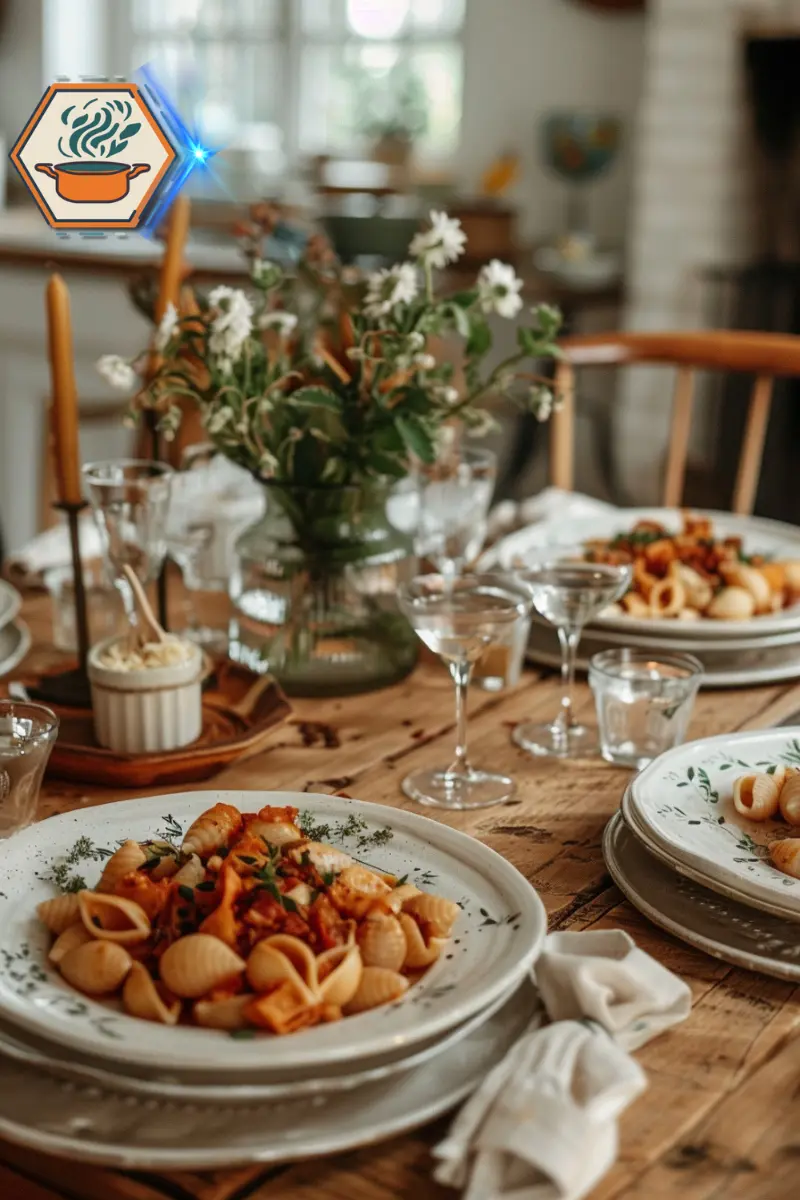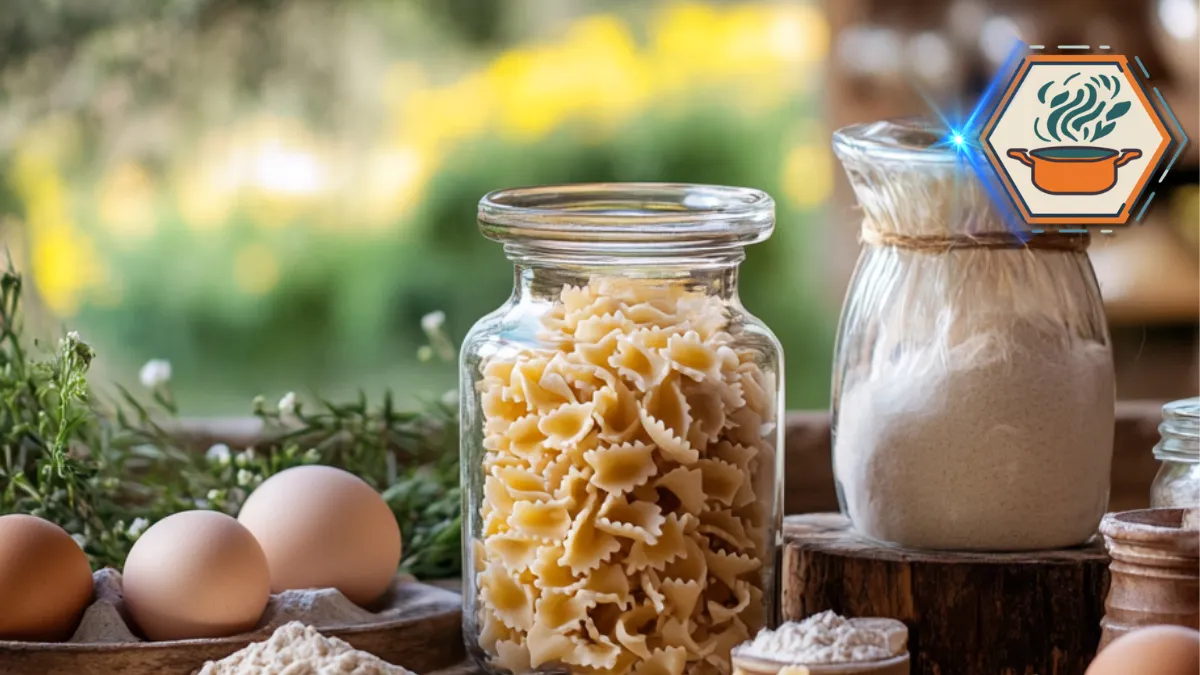Jump To
Table of Contents
Conchiglie Pasta: A Deliciously Versatile Classic
Conchiglie pasta, better known as shell pasta, is one of the most iconic shapes in the pasta world. Its unique shell-like design makes it both visually appealing and functional. This article explores its origins, unique features, and widespread popularity.
What is Conchiglie Pasta?
Definition and Origins of Conchiglie Pasta
Italian artisans created this pasta centuries ago using simple ingredients such as durum wheat semolina and water. Initially, they formed the shape by pressing the dough into molds or shaping it by hand. Over time, the process became more standardized, allowing conchiglie to be mass-produced while retaining its traditional charm.
Want to learn more about pasta’s evolution? Check out the National Pasta Association’s official history for a fascinating timeline.
1. Its Shell Shape Holds Sauces Like No Other
The shell-like design of conchiglie is more than aesthetic—it’s practical. The ridges and hollow center trap sauces beautifully, enhancing each bite. Italians even named it after “conchiglia,” meaning seashell—a shape made to serve flavor.
2. It’s Deeply Rooted in Italian Culinary Tradition
Conchiglie pasta has been part of Italy’s soul for generations. From family kitchens to regional specialties, its shell shape made it ideal for rustic, hearty dishes. The pasta’s journey from handmade to household staple reflects the deep cultural love Italians have for food that’s simple, yet meaningful.
(Discover another unique pasta in our guide on What is Gigli Pasta?)
3. It Comes in All Sizes — From Tiny to Stuffable

Whether you’re crafting a light soup or a hearty baked dish, there’s a conchiglie size for it. Tiny conchigliette are perfect for broths and pasta salads. Standard conchiglie fit creamy or tomato sauces like a glove. And large conchiglioni? They’re made to be stuffed with cheese, spinach, or ground meat—then baked to perfection. It’s pasta designed for flexibility.
4. It’s Made to Hold Flavor, Not Just Sauce
Conchiglie doesn’t just carry sauce—it locks in flavor. Its ridges and hollow shape are designed to capture not only creamy textures, but also ingredients like herbs, spices, cheese, or even tiny veggies. With every bite, you get a perfect balance of pasta and what it’s meant to carry. That’s what makes it a true flavor-holder.
5. It’s a Global Favorite in Creative Dishes
From Italy to India and beyond, conchiglie pasta has inspired fusion dishes around the world. In the U.S., it’s a go-to for baked mac and cheese. In India, it shows up in spicy masala-style stir-fries. Even Asian chefs pair it with sesame, soy, or peanut sauce. Its shape and structure make it easy to experiment with—no matter the cuisine.
Nutritional Benefits as a Versatile Ingredient
Beyond its culinary versatility, conchiglie offers notable nutritional benefits. Pasta made from durum wheat provides a source of complex carbohydrates, which release energy slowly and keep you full longer. Additionally, whole-wheat versions add more fiber, supporting digestive health.
For those with dietary restrictions, gluten-free conchiglie made from rice or chickpea flour offers an excellent alternative. Pairing it with vegetables, lean proteins, or plant-based options can make conchiglie part of a balanced, healthy meal plan.
7. What Is Conchiglie Pasta Made Of?
Conchiglie pasta may look fun and playful, but it’s crafted from ingredients that give it texture, strength, and flavor. The most traditional version is made from durum wheat semolina and water—giving it that golden hue and firm “al dente” bite.
Want a twist? You’ll find whole wheat conchiglie for extra fiber, or gluten-free versions made from rice or chickpea flour. Each brings its own flavor and nutritional benefits to the table.
And yes—you can even make it at home! All you need is semolina flour, water, and a bit of patience to shape those tiny shells.
Explore our easy homemade dough tips in the Bone Broth Cooking Guide.
Cooking and Serving Conchiglie Pasta

Conchiglie, also known as shell pasta, is a versatile choice that fits a variety of dishes. This section will guide you on how to cook it perfectly, pair it with sauces, and use it creatively in recipes. We’ll also explore regional cooking variations to inspire your culinary adventures.
8. 🍽️ Try This: Cheesy Stuffed Conchiglioni Bake
PrintCheesy Stuffed Conchiglioni Bake
Creamy, cheesy, and loaded with flavor, this baked conchiglie recipe is perfect for cozy dinners. It’s easy to make, satisfying, and made to impress.
- Total Time: 45 minutes
- Yield: 4 servings
Ingredients
1 tbsp olive oil
12 conchiglioni (large shell pasta)
1 cup ricotta cheese
1/2 cup grated mozzarella
1/4 cup grated Parmesan
1 egg
1/2 tsp garlic powder
1/2 tsp dried basil
1 cup marinara sauce
Salt & pepper to taste
Fresh basil for garnish (optional)
Instructions
Preheat your oven to 180°C (350°F).
Cook the conchiglioni in salted water until al dente, then drain.
In a bowl, mix ricotta, mozzarella, Parmesan, egg, garlic powder, basil, salt, and pepper.
Fill each shell with the mixture and place in a baking dish.
Pour marinara sauce over the shells.
Bake uncovered for 25–30 minutes.
Serve hot, garnished with basil or extra Parmesan if desired.
Notes
You can prepare this dish in advance and refrigerate before baking. It also freezes well for up to 2 months.
- Prep Time: 15 minutes
- Cook Time: 30 minutes
- Category: Pasta, Dinner
- Method: Baked
- Cuisine: Italian
- Diet: Vegetarian
9. It’s Easy to Cook Like a Pro — Even as a Beginner
Cooking conchiglie is delightfully simple — no chef’s diploma required. All you need is boiling water, salt, and a few golden rules.
🟡 Boil it right: Always use a large pot of salted water. This gives the pasta room to move and seasons it from within.
🟡 Stir early: To prevent sticking, give it a gentle stir in the first 30 seconds.
🟡 Don’t overcook: Test 2 minutes before the package time. You want it al dente — firm, never mushy.
🟡 Save your pasta water: That starchy water is liquid gold for sauces. Just a splash can transform your dish.
Even better, conchiglie keeps its shape and bite beautifully, making it forgiving if you’re still mastering your timing. Whether tossed in pesto or baked with cheese, this pasta always shows up golden and perfect.
🎯 Why it matters: It’s the kind of pasta you can trust on a busy night — easy to handle, quick to impress.
10. Its Versatility Elevates Any Dish — From Everyday to Gourmet
Whether you’re making a quick family dinner or an elegant Italian feast, conchiglie adapts to every occasion. Its unique shape makes it just as fitting in a creamy mac and cheese as in a seafood medley with white wine sauce.
From weeknight casseroles to holiday-worthy entrées, this pasta does more than fill a plate — it becomes the centerpiece.
🟢 Toss it with butter and peas for kids.
🔴 Layer it into baked meat sauce for guests.
🟣 Stuff it with spinach and ricotta for date night.
🎯 That’s why it’s a favorite: You don’t have to choose between simplicity and sophistication — conchiglie gives you both.
(FAQs) About Conchiglie Pasta
Is Conchiglie Pasta Healthy?
Conchiglie pasta, also known as shell pasta, offers different nutritional values based on the type of flour used. The nutritional breakdown includes:
- White Conchiglie Pasta: Made from refined flour, it is lower in fiber but has a smooth texture and neutral taste.
- Whole Wheat Conchiglie Pasta: Packed with fiber and nutrients, it is ideal for a more filling and wholesome meal.
- Alternative Flour Conchiglie: Options made from chickpeas, lentils, or quinoa cater to gluten-free diets and are higher in protein.
When incorporated into a balanced diet, conchiglie pasta can be a healthy choice. Pair it with fresh vegetables, lean proteins, and healthy fats to maximize its benefits.
Can You Make Conchiglie Pasta at Home?
Yes, making conchiglie pasta at home is both fun and rewarding. Here’s what you’ll need:
- Tools: A pasta roller or rolling pin, a sharp knife, and a pasta board.
- Ingredients: All-purpose flour or semolina flour, eggs, and a pinch of salt.
Challenges: Crafting the iconic shell shape requires patience and practice.
Benefits: Homemade pasta offers better control over ingredients, such as adding spinach or beetroot puree for color and extra nutrients.
If you’re curious about other homemade recipes, check out our guide to keeping madeleines moist, which shares similar principles of precision in baking.
What Dishes Can You Use Conchiglie For?
Conchiglie is incredibly versatile, complementing a variety of cuisines. Some standout ideas include:
- Classic Italian Dishes: Baked conchiglie with marinara sauce and mozzarella.
- International Inspirations:
- Thai-inspired conchiglie stir-fry with peanut sauce.
- Mexican-style conchiglie salad with beans, corn, and avocado.
- Creative Recipes:
- Cheesy stuffed conchiglie shells with ricotta and spinach.
- Baked conchiglie casserole with a creamy white sauce.
Experimenting with shell pasta in global recipes makes it a fantastic addition to any kitchen.
How is Conchiglie Different From Other Pasta Shapes?
Conchiglie stands out due to its ability to hold sauces inside its shell-like shape. When compared to other pasta:
- Penne: While tubular, it lacks the same sauce-holding ability.
- Fusilli: Twisted spirals are better for pesto but don’t match the shell’s depth for creamier sauces.
- Rigatoni: Larger and ridged, it works well with meatier sauces but can’t match the delicacy of small conchiglie.
Each pasta shape has unique uses, making conchiglie a go-to choice for thick, flavorful sauces.
💬 Still curious about conchiglie pasta or need tips for your next recipe? Drop your question in the comments — or explore more delicious ideas on our blog!

